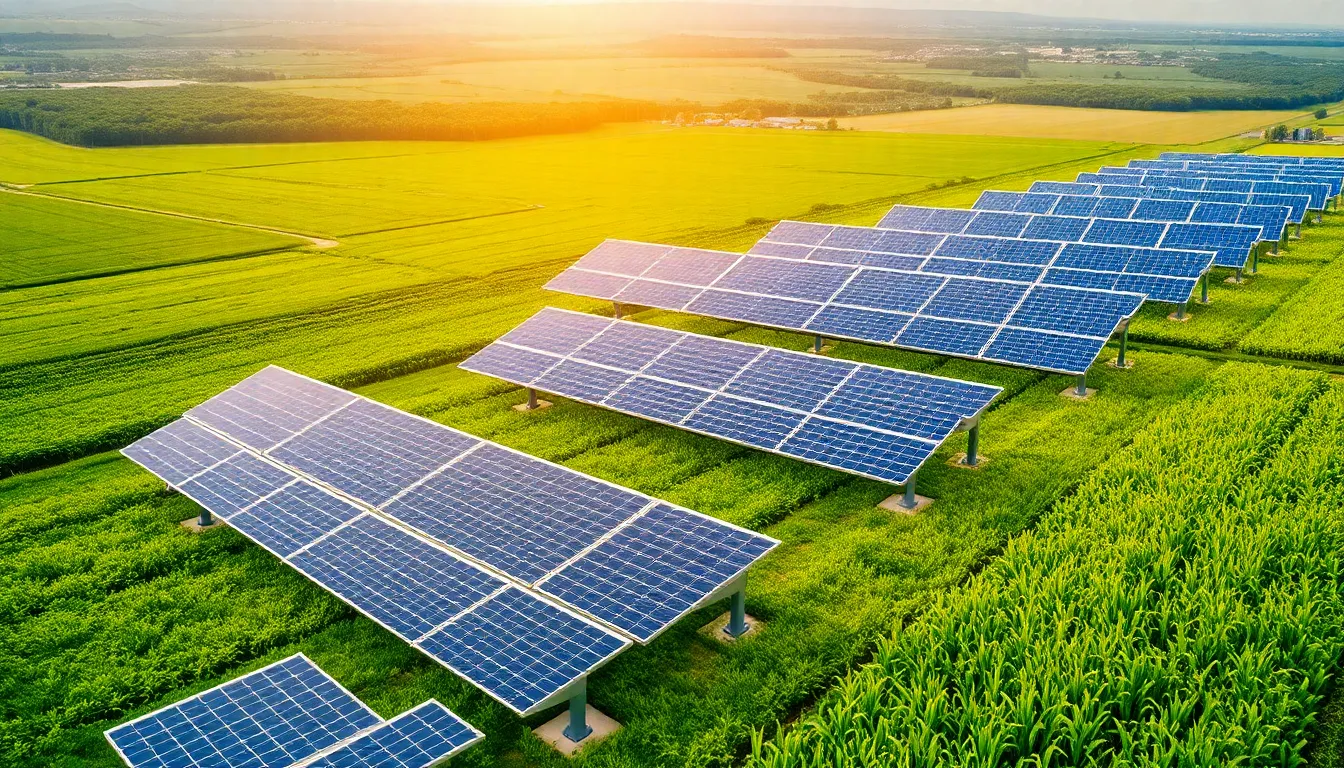In a world where plastic straws are public enemy number one and climate change feels like a bad horror movie, new sustainable technology is stepping in like a superhero. From solar panels that look like art to biodegradable gadgets that won’t haunt landfills for centuries, innovation is making eco-friendliness not just smart but downright cool.
Table of Contents
ToggleOverview of New Sustainable Technology
New sustainable technology actively addresses pressing environmental challenges. Innovations in this field include solar panels crafted to blend seamlessly with building aesthetics. Biodegradable gadgets now replace conventional plastic products, which reduces landfill waste significantly.
Technologies such as energy-efficient systems provide substantial energy savings for consumers. Advanced water purification systems utilize solar power, ensuring clean water access even in remote areas. Smart home devices optimize energy use, contributing to lower utility costs while promoting eco-friendliness.
Additionally, companies are exploring plant-based materials for packaging. These alternatives decompose naturally, minimizing plastic pollution. Electric vehicles gain popularity, significantly reducing carbon emissions compared to traditional gasoline options.
Efforts to enhance recycling processes through automation show promising results. Machines now sort recyclables with increased accuracy, boosting recycling rates. Furthermore, innovations in wind and solar farms deliver renewable energy to power grids, facilitating a transition away from fossil fuels.
Investment in research and development accelerates the growth of sustainable technology. Governments and private sectors increasingly collaborate to drive impactful change. This collective effort promotes widespread adoption of sustainable practices, ensuring a greener future for all.
With continuous advancements, the future of sustainable technology appears optimistic. These innovations not only fulfill current practical needs but also foster a culture of environmental stewardship. The commitment to sustainability shapes industries and influences daily choices, reflecting a significant shift toward responsible living.
Types of New Sustainable Technology

Sustainable technology encompasses various innovations aimed at addressing environmental challenges. The following categories highlight key areas of development.
Renewable Energy Innovations
Renewable energy innovations lead the charge in sustainable technology. Solar panels now come in aesthetic designs, making them suitable for residential and commercial properties. Wind farms harness natural resources, contributing significant power to the grid. Geothermal energy systems use Earth’s heat for heating and cooling, reducing reliance on fossil fuels. Energy storage solutions, such as batteries, enhance the efficiency of renewable sources by storing excess energy during peak production times. These advancements significantly decrease carbon footprints across industries.
Sustainable Agriculture Practices
Sustainable agriculture practices include techniques that minimize environmental impact while maximizing yield. Precision farming uses technology to monitor crop health and soil conditions. Regenerative agriculture focuses on restoring soil health, promoting biodiversity, and enhancing ecosystem services. Organic farming eliminates synthetic pesticides and fertilizers, encouraging natural pest control methods. Vertical farming optimizes space and resources by producing food in urban environments, reducing transportation emissions. These practices enhance food security while preserving the planet’s resources.
Eco-Friendly Transportation Solutions
Eco-friendly transportation solutions offer alternatives to traditional fossil-fuel-powered vehicles. Electric vehicles have surged in popularity, providing significant reductions in greenhouse gas emissions. Hydrogen fuel cell technology represents another innovative approach, converting hydrogen into electricity with water as the only byproduct. Public transportation systems are increasingly adopting electric and hybrid models to lower urban air pollution. Biking and walking infrastructure improvements promote sustainable commuting, encouraging healthier lifestyles alongside reduced carbon footprints. These developments form a crucial part of the transition to greener transportation methods.
Benefits of New Sustainable Technology
New sustainable technology offers considerable advantages across multiple sectors. From environmental preservation to economic gains, the implications of these innovations are significant.
Environmental Impact
Innovations like solar panels and wind farms contribute directly to reduced carbon emissions. Sustainable agriculture practices, including precision farming, promote efficient resource use, minimizing waste. Furthermore, electric vehicles lessen reliance on fossil fuels, leading to cleaner air and lower greenhouse gas levels. Biodegradable materials replace conventional plastics, aiding in pollution reduction. The emphasis on renewable energy sources lessens the ecological footprint of energy production. Enhanced recycling methods improve waste management, allowing for better resource recovery. With each step, sustainable technology plays a critical role in safeguarding the planet for future generations.
Economic Advantages
Investing in sustainable technology drives economic growth through job creation in green sectors. Energy-efficient systems reduce operational costs for businesses and households alike, leading to substantial savings. Government incentives encourage the adoption of renewable energy sources, making them more accessible. The market for electric vehicles expands, contributing to a flourishing automotive industry. Sustainable practices in agriculture lead to higher yields and profitability, benefiting farmers and consumers. Companies leveraging plant-based packaging can attract environmentally conscious consumers, enhancing brand loyalty. Overall, sustainable technology fosters economic resilience and promotes a more sustainable future.
Challenges and Limitations
Sustainable technology faces several significant challenges. These barriers can hinder the rapid development and widespread adoption of innovative solutions.
Technological Barriers
Technological hurdles present a major obstacle in the journey toward sustainability. Advanced technologies often require substantial investment for research and development. High costs may deter small businesses from adopting these innovations. Limited infrastructure for renewable energy sources can lead to inefficiencies. For instance, inadequate grid systems struggle to handle intermittent power generated by solar and wind farms. Additionally, technologies such as energy storage solutions may not yet be widely accessible. Consequently, relying heavily on nascent systems limits operational effectiveness.
Social Acceptance
Social acceptance plays a critical role in the adoption of sustainable technology. Many individuals remain skeptical about the effectiveness of these new innovations. Concerns around upfront costs and perceived inefficiencies often arise in discussions. Education is essential to address misconceptions and encourage acceptance. In fact, research indicates that increased awareness leads to greater openness toward electric vehicles and renewable energy systems. Cultural factors also influence perceptions of sustainability, resulting in varying acceptance rates across communities. Collaborative efforts between stakeholders can bridge gaps and promote understanding.
The evolution of sustainable technology marks a pivotal shift in addressing environmental challenges. With innovative solutions transforming industries and lifestyles, it’s clear that sustainability can be both practical and appealing. The advancements in renewable energy, smart devices, and eco-friendly materials showcase a commitment to a greener future.
While challenges remain, the ongoing investment in research and education will bridge gaps and foster acceptance. As communities embrace these technologies, they contribute to a collective effort that not only enhances environmental health but also drives economic growth. The path ahead is promising, with sustainable technology paving the way for responsible living and a healthier planet.
